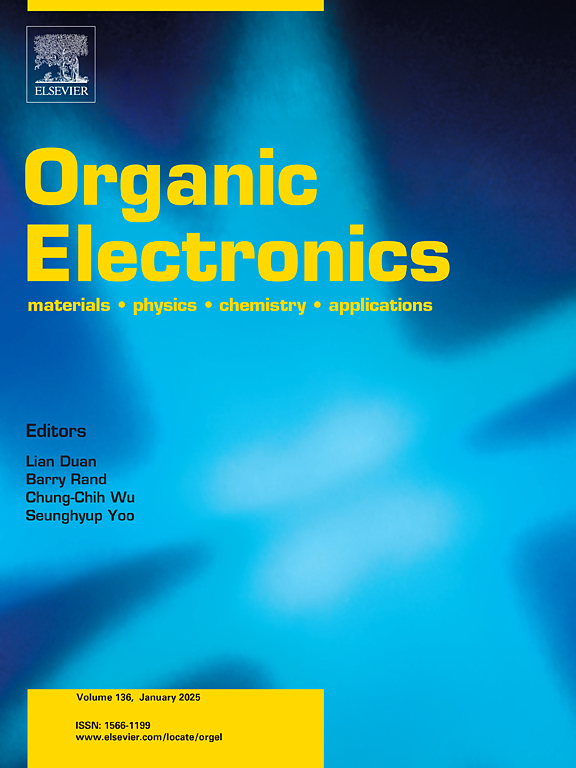Investigation of excess charge carriers and optimization of InP quantum-dot light-emitting diodes using self-assembled monolayers
IF 2.7
4区 工程技术
Q3 MATERIALS SCIENCE, MULTIDISCIPLINARY
引用次数: 0
Abstract
InP-based quantum dot (QD) light-emitting diodes (QLEDs) have emerged as promising candidates for next-generation displays, yet their development remains challenging due to charge imbalances caused by the difference in electron and hole injection. Moreover, it is still debated whether the excess carriers are electrons or holes. In this study, we address this challenge by introducing self-assembled monolayers (SAMs) between the electron transport layer (ETL) and QDs. By employing two distinct SAMs with opposite dipole moments—4-methoxybenzoic acid (MBA) and 4-cyanobenzoic acid (CBA)—we provide direct evidence that electrons are in excess in InP QLEDs. The contrasting charge injection modulation effects of these SAMs enabled this clear identification of the excess carriers. Additionally, the SAMs improved surface morphologies and effectively passivated surface defects on the ZnO ETL, mitigating exciton quenching. As a result, MBA-treated QLEDs demonstrated superior device efficiencies compared to pristine or CBA-treated devices, attributed to the suppression of electron injection from the ETL to the QDs. We believe this study offers valuable insights for optimizing QLED performance through precise charge carrier modulation.

过量载流子的研究及自组装单层InP量子点发光二极管的优化
基于inp的量子点(QD)发光二极管(qled)已经成为下一代显示器的有希望的候选者,但由于电子和空穴注入的差异导致的电荷不平衡,它们的发展仍然具有挑战性。此外,多余载流子是电子还是空穴还存在争议。在本研究中,我们通过在电子传输层(ETL)和量子点之间引入自组装单层(sam)来解决这一挑战。通过使用具有相反偶极矩的两种不同的SAMs - 4-甲氧基苯甲酸(MBA)和4-三苯甲酸(CBA),我们提供了InP qled中电子过剩的直接证据。对比这些地对空导弹的电荷注入调制效应,可以清楚地识别多余载流子。此外,SAMs改善了ZnO ETL表面形貌,有效钝化了ZnO ETL表面缺陷,减轻了激子猝灭。因此,与原始或cba处理的器件相比,mba处理的qled显示出更高的器件效率,这归因于从ETL到QDs的电子注入受到抑制。我们相信这项研究为通过精确的电荷载流子调制优化QLED性能提供了有价值的见解。
本文章由计算机程序翻译,如有差异,请以英文原文为准。
求助全文
约1分钟内获得全文
求助全文
来源期刊

Organic Electronics
工程技术-材料科学:综合
CiteScore
6.60
自引率
6.20%
发文量
238
审稿时长
44 days
期刊介绍:
Organic Electronics is a journal whose primary interdisciplinary focus is on materials and phenomena related to organic devices such as light emitting diodes, thin film transistors, photovoltaic cells, sensors, memories, etc.
Papers suitable for publication in this journal cover such topics as photoconductive and electronic properties of organic materials, thin film structures and characterization in the context of organic devices, charge and exciton transport, organic electronic and optoelectronic devices.
 求助内容:
求助内容: 应助结果提醒方式:
应助结果提醒方式:


